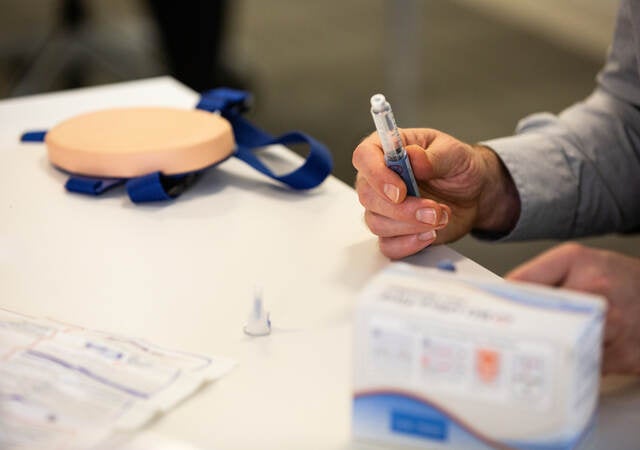The ISO 10993 standard series primarily deals with biological evaluations for medical devices. Part 10993-17 of the standard addresses the toxicological risk of chemical constituents resulting from the chemical characterization of medical devices, according to ISO 10993-18. In this article, we will discuss the changes and new concepts introduced in ISO 10993-17. The standard features several new terminologies and concepts: toxicological screening limit (TSL), estimated exposure dose (maximum; EEDmax) and release kinetics.
The standard includes schematic flowcharts to demonstrate how toxicological risk assessment fits into the medical device risk management process and the critical activities involved in preparing toxicological risk assessment reports.
During the hazard identification process, the chemical constituent toxicological information (primary and secondary health effects) point of departure — e.g., no observed adverse effect level (NOAEL) or the lowest observed adverse effect level (LOAEL) — for the relevant endpoint should be collected using multiple sources/databases, e.g., Toxplanet, National Toxicology Program (NTP), Environmental Protection Agency (EPA) PubMed, Carcinogenic Potency Database (CPDB), Registry of Toxic Effects of Chemical Substances (RTECS), European Food Safety Authority (EFSA), European Chemicals Agency (ECHA), World Health Organization (WHO).
The selection and search criteria must be documented and justified. The reliability and quality of the data must be evaluated and established. Information on chemicals, such as animal model, age, sex, route of administration, dose, frequency of administration, the type of harm(s) associated with the specific dose(s) and toxic effects must be documented. When toxicity information on the chemical is unavailable, a structurally similar chemical, i.e., analog, with appropriate toxicity information can serve as a surrogate to enable a read-across assessment.
One of the critical changes in ISO 10993-17 is the introduction of a new concept: toxicological screening limits (TSLs). A TSL is a cumulative exposure dose over a specific time period for an identified constituent that does not induce significant health effects. A TSL is expressed in micrograms per day. You can use the TSL to evaluate whether the total amount of an identified chemical constituent is too low to produce genotoxicity, cancer, systemic toxicity — e.g., acute, subacute, sub-chronic, chronic — or reproductive or developmental toxicity. No toxicological risk assessment is necessary if the total amount of a chemical constituent is less than the TSL. The main objective of implementing the TSL is to reduce the burden on toxicologists and focus the toxicological risk assessment on potentially harmful chemical constituents. TSLs apply to the identified chemical constituent(s) and total quantity present in, on or extracted from the medical device.
There are some limitations to this TSL concept, including when the nature of the harm is irritation; Cohort of Concern chemicals; inadequately identified chemical constituents (unknowns); long-term-contact medical devices in neonates, including premature infants or very young infants, i.e., 16 weeks old; and volatile organic compounds (VOCs) from gas pathway medical devices. TSLs are not intended to replace the analytical evaluation threshold (AET) established in ISO 10993-18:2020. You can use the TSL to assess the safety of extractables that exceed the AET, subject to the limits listed above.
For the tolerable intake calculation, select the most clinically relevant point of departure (POD). The standard provides numerical levels for the route-to-route, exposure duration, POD, data applicability and quality uncertainties. When extrapolating oral routes to parenteral routes, oral uncertainty factors and the chemical constituent bioavailability data require consideration. The additional uncertainty factor of 3 must be applied to the patient population for preterm, newborn and very young infants, i.e., 16 weeks or younger. When chemical constituent-specific toxicological information is unavailable, use the threshold of toxicological concern (TTC) approach. Based on the duration that an individual will be exposed to a constituent, a mutagenic/cancer TTC can be chosen. A non-cancer TTC, e.g., Cramer class, can be selected if the toxicological data indicate that a chemical does not induce a genotoxic response, including negative mutagenicity data or negative results in at least two computational models, e.g., system-based and statistically based.
Another new concept introduced is the EEDmax. The EEDmax is the worst-case exposure per day of a chemical constituent that makes contact with or enters the body. Two approaches require consideration regarding the EEDmax. When the release kinetics information for the chemical constituent is available, the EEDmax can be determined based on the chemical’s release kinetics (the highest daily quantity throughout the release kinetics study for each time period). If release kinetics information for a chemical is not available, the assumed release (total quantity (TQ) divided by release days (Rd) for each period) is calculated as the worst-case scenario. Both situations require the application of the scaling factor (maximum number of devices utilized clinically). It makes more sense to calculate the EEDmax at each time point during the exposure period for medical devices than the total quantity of chemical compounds released over the duration of use.
The EEDmax approach represents a more clinically relevant exposure. The main advantage of the EEDmax is to assess the potential for a chemical constituent to induce acute, subacute, sub-chronic or chronic toxicities, which you can be determined for the various contact duration categories specified in ISO 10993-1.
It is possible to calculate the margin of safety (MOS) by dividing the tolerable intake (TI) by the EEDmax. It is possible to calculate the MOS for multiple duration categories (acute (1 d), sub-acute (2-30 d), sub-chronic (30-365 d) and chronic (365 d)) using this novel concept. When the MOS is higher than 1 and the contributing values to the MOS are conservative in nature, the EEDmax of a chemical constituent poses no significant risk to human health. The toxicological risk will need to be addressed further if the MOS is less than 1. Additional approaches can be used to address toxicological risk per ISO 10993-1 and ISO 14971.
These major changes in the standard will impact toxicologists and manufacturers preparing toxicological risk assessment reports. We recommend attending expert-led training sessions to fully comprehend the new requirements in the updated ISO 10993-17 standard. These changes will reduce the turnaround time for preparing toxicological risk assessment reports.
References
ISO/DIS (2021) 10993-17, Biological Evaluation of Medical Devices – Part 17: Toxicological Risk Assessment of Medical Device Constituents
Add:
10993-1
10993-18:2020
About the author
Sairam Kishore Arava, DABT, ERT, works as a senior toxicologist at UL Solutions, leading a nonclinical testing toxicology group located in India. He prepares and oversees the preparation of toxicological risk assessment reports, biological evaluation plans and reports for various types of medical devices. Sairam supports manufacturers in testing their devices through strategy development and execution of testing and monitoring. He has 20 years of experience in the toxicology domain and holds a doctorate in toxicology from the University of Madras. Sairam is an American board-certified toxicologist and European registered toxicologist.
Get connected with our sales team
Thanks for your interest in our products and services. Let's collect some information so we can connect you with the right person.



